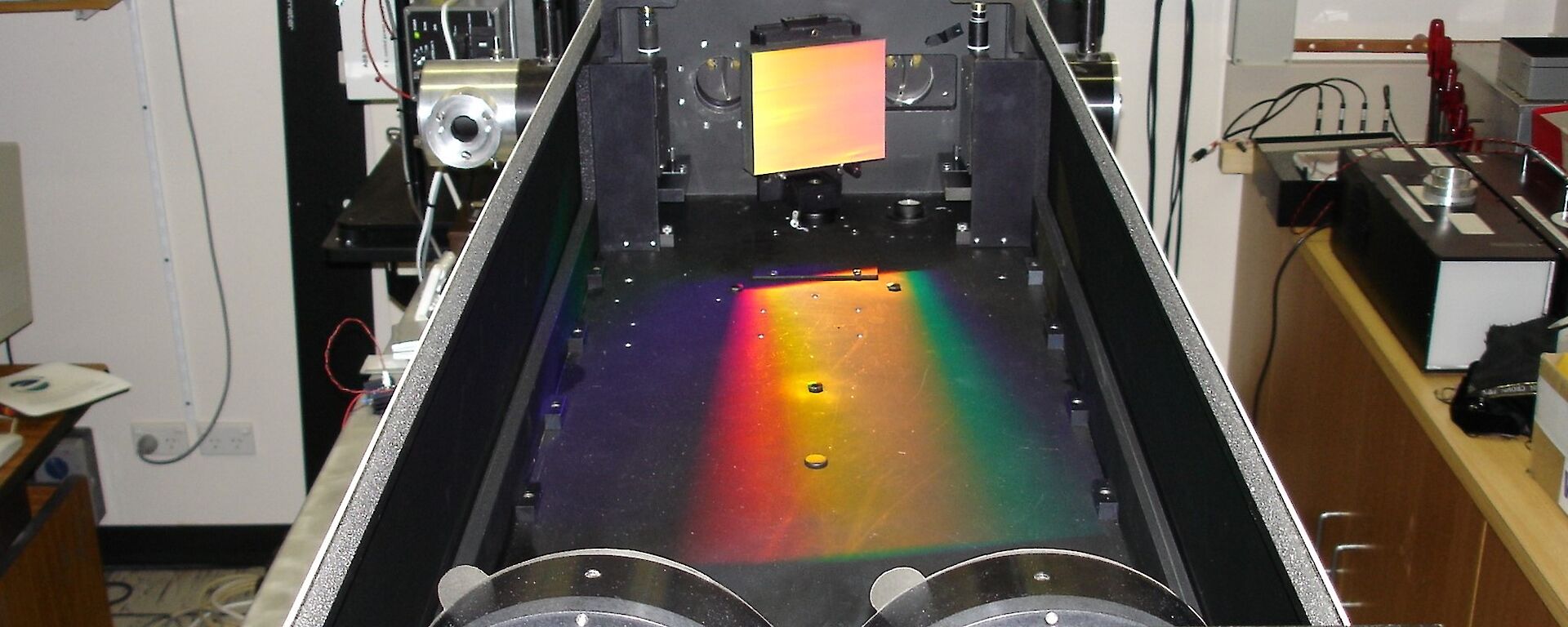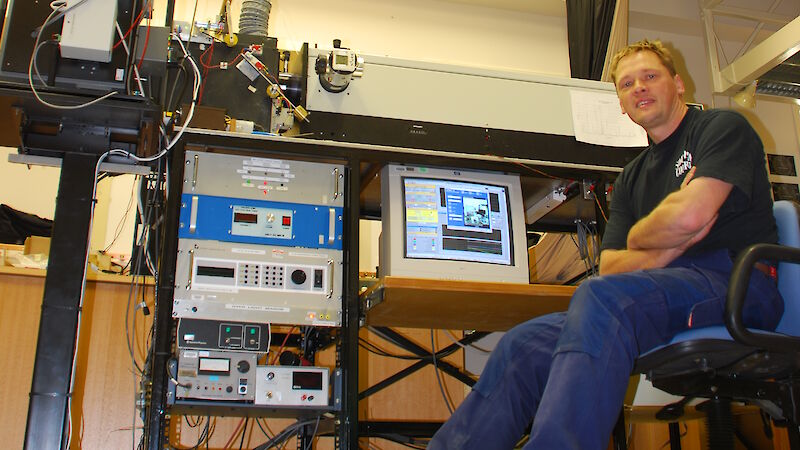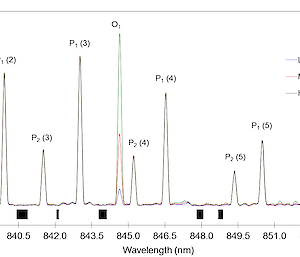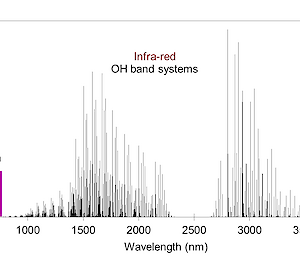Hydroxyl molecules (OH) are a product of the Hydrogen-Ozone reaction (H + O3 → OH* + O2). This exothermic (hot) process results in an ‘excited’ form of the OH molecule.
The excited OH molecule radiates energy. A multitude of vibrational and rotational states in excited OH, cascade to lower energy states by emitting light (photons). This results in an emission spectrum that extends over a wide wavelength range of 500 nm to 5,000 nm. It is strongest in bands in the infra-red (1,600 nm and 2,800 nm).
These are by far the brightest emissions in the night sky, but we can’t see them. They are beyond the visible spectrum range of 400 nm to 700 nm.
However, optical instruments can ‘see’ these emissions. We have been continuously measuring parts of this spectrum using spectrometers from the ground at Davis station.
The graph below shows accumulated spectra of the OH(6–2) band around 840 nm, at three levels of auroral activity. An oxygen emission line at 844 nm is used to gauge the level of auroral activity in each spectrum. P-branch lines (of P, Q and R that describe different transitions within the excited OH molecule) seen in the graph are used to measure atmospheric temperature. The ratio of intensities of one line to another, coupled with known line parameters and constants allow the temperature to be calculated. Read the analysis method details to find out more about this method.
Routine, automated observations have provided a record of mesopause region temperature for more than 20 years. They allow for long-term trend and variability studies and comparisons with satellite and model observations.
The Hydroxyl airglow project is supported through the Australian Antarctic Science Program. The project title is “Mesospheric OH Climate Assessment (MOHCA)” and the investigators are:
- Dr J. French, Australian Antarctic Division (Chief Investigator)
- Dr. A Klekociuk, Australian Antarctic Division, and international collaborator Dr. Frank Mulligan.
The spectrometer is maintained and operated by the Antarctica in the Global System atmospheric staff at Davis station.





